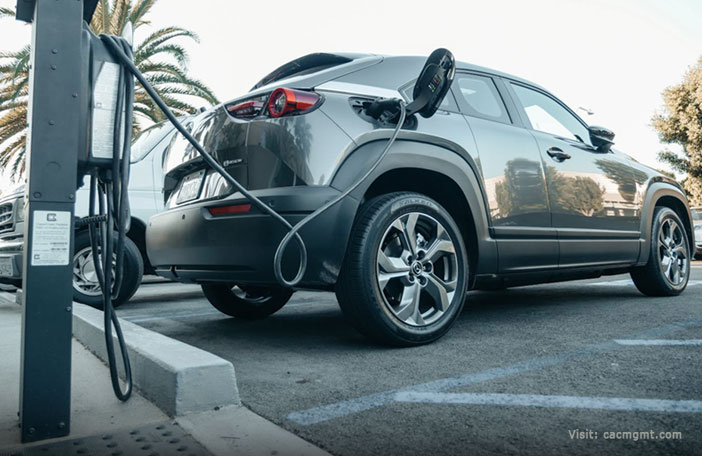Below is a helpful tip from the Davis-Stirling.com Newsletter by ADAMS | STIRLING PLC regarding insuring Electric Vehicle (EV) charging stations. It reads as follows . . .
QUESTION. Are homeowners who install an EV charging station required to carry insurance and name the association as an additional insured? –Andrew S.
ANSWER. Yes, owners are required to carry insurance. Unfortunately, the Legislature created some confusion over the additional insured requirement.
Amended Statute. When the EV statute was adopted in 2011 (as Civ. Code § 1353.9), it contained language in two places requiring owners to name the association as additional insured: sections (f)(1)(C) and (f)(3). In 2018, the statute (now Civ. Code 4745) was amended to remove the dollar amount of the insurance ($1 million) and the additional insured requirement from section (f)(3). The Legislature left in place in section (f)(1)(C) the requirement that owners name the association as an additional insured “in the amount set forth in paragraph (3).”
Since the dollar amount was removed from (f)(3), some believe that owners are no longer required to name the association as additional insured even though it is still found in Civil Code § 4745(f)(1)(C). This issue will likely generate greater interest as more EV charging stations are installed in parking structures. The reason is electrical fires.
E-Fires on the Rise. Fires from lithium-ion batteries in electric vehicles are still low but on the rise. The problem with EV fires is that they burn faster and hotter than combustion engine fires, and release more toxic fumes. Typically, a gas-powered vehicle burns at 1,500 degrees Fahrenheit, while an EV fire burns at 5,000 degrees. Because EV fires are so intense, they can cause structural damage to buildings.
Not only that, EV fires are extremely difficult to put out, especially inside parking structures where their proximity to other vehicles can create a chain reaction. It takes about 2,000 gallons of water to extinguish a gas-powered vehicle fire; an EV fire can take 20,000 gallons or more.
According to testimony in Congressional hearings last month, “extinguishing lithium-ion battery fires has proven difficult for fire services across the country. For instance, in 2021, after a Tesla caught fire following a crash in a Houston suburb, eight firefighters spent over seven hours and 28,000 gallons of water, an amount the department normally uses in a month, before the fire was fully extinguished. The reality is that some lithium-ion battery fires can reignite hours later, some even days later; and traditional fire extinguishing methods do not always work on them.”
RECOMMENDATION: In light of the potential for significant damage from an EV fire, the more conservative approach for associations is to require owners of EV charging stations to provide the association with a certificate of insurance naming the association as additional insured. Boards may be happy to have the extra layer of insurance if an EV catches fire in their parking structure.
DISCLAIMER. The Davis-Stirling.com Newsletter by ADAMS | STIRLING PLC provides commentary only, not legal advice. For legal advice, you’ll need to hire legal counsel. You can hire ADAMS | STIRLING PLC; Keep in mind they are considered corporate counsel to associations only.

